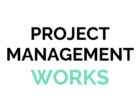The right project management methodology (PMM) lays the foundations for a successful IT Project, it’s that simple. The correct methodology creates structure and governance, defines communications and documentation, and establishes principles that guide the team and help them stay on track, on the same page and on time.
But … how do you know what’s right? Right?
This is a question that keeps popping up in conversations with new and existing customers alike – WHAT’S THE BEST IT PROJECT MANAGEMENT METHODOLOGY?
IT’S KINDA THE WRONG QUESTION.
The right PMM is … the one that’s perfect for your current project which, admittedly, is not hugely helpful! The good news is there’s a stack of info online, at Stoneseed we’ve written loads about “choosing the best methodology” and, actually, as an “as a Service” project resource and project advisory provider – we can TOTALLY help you select the right PMM.
Among the pillars of Stoneseed’s service is a passion for really getting to know your business, your projects, your goals and how you operate. This, combined with years of experience and expertise in project management, gives us a unique insight. Either in an advisory capacity, or when you hire project talent via our PMaaS model, Stoneseed’s know-how can help you choose the best methodology for you.
However … here’s why ‘WHAT’S THE BEST IT PROJECT MANAGEMENT METHODOLOGY?’ is the wrong question:
It doesn’t establish how ready you are to execute the best PMM.
EXECUTION OF PROJECT MANAGEMENT METHODOLOGY MATTERS
Stoneseed’s Project Management as a Service (PMaaS), effectively a cost-effective model for project resources, is underpinned by Stoneseed’s methodology. It is something that we gave serious and continuing consideration to, it gives our clients reassurance about what they can expect and, most of all, our people know how to execute it! This rather fastidious approach to our methodology and working with clients as they adopt and adapt to a new methodology has given is a unique insight.
Project teams can select the perfect methodology (or hybrid approach) for their project and still not get the best from it – if they don’t know how to get the best from it.
Imagine getting a smartphone upgrade, your new device will come with a new manual (probably online!) and there’ll be hours of manufacturer and user-generated tutorials online, but it broadly does the same job as your old phone – so you muddle through. Within minutes you’re WhatsApp-ing the group chat, scrolling through socials and replying to an unidentified text with “New phone. Who dis?” Over the time of your contract, you discover all the amazing new things your phone can do – it’s mind blowing how much potential you wasted in those first hours, days, weeks and even months.
IT Project Management Methodologies can be like that. I’ve known clients switch from Waterfall to Agile, because the flexibility would allow them to bring their project to market faster, but then fail to leverage its full potential by being too rigid and systematic. They all thought they were executing in an agile way, they point and say “look – sprints!” When it’s pointed out that they were still signing off a phase before starting the next, whereas the team could have been working ‘like an octopus’ (as my PM friend Malc calls it) with tentacles simultaneously touching different phases to rapidly accelerate progress, the penny drop moment is visible!
SALLY’S DISSONANCE: HOW WATERFALL’S NOT MADE OF STONE
CIO Sally had a Waterfall/Agile epiphany after lockdown.
“Waterfall was always our go-to before the pandemic. All our projects had very clearly defined end goals, there was a clear, thoroughly outlined, specific vision and, once green lit, nothing really changed from initiation, through project development, and onto delivery. Waterfall’s linear progression was perfect for us.”
“I don’t know whether it was that the market shifted after Covid, or maybe it was slowly shifting already, before lockdowns, but when we opened up again after being furloughed, we found ourselves in a more reactive environment and the nature of our projects had changed.”
“If I’m honest, no one twigged this at first, we were very much back to ‘business as usual’ – albeit we were working remotely. I remember our first project back was an app that had been conceived before lockdown but then was paused. We thoroughly reassessed whether it was still business-case-relevant, and it was – then! BUT market needs kept changing, we had to make adjustments accordingly. Waterfall was our-set-in-stone-go-to, so kept having to go back time and again and tweak to make sure things lined up. There were unbudgeted costs and time delays.”
Worse still, a competitor had started on a similar app, and they had the advantage of starting post-pandemic, in the ‘new market environment’ so, while Sally’s team were adjusting, the competitors were initiating.
Sally admits, “Their app came to market way before ours and (don’t tell anyone I said this) knocks spots off ours.”
I can’t know for sure, but I’d bet my mortgage that the competitor’s app was developed using Agile which leaves more room to adapt, change and develop in sync with your project’s needs.
Agile methods can provide accelerated delivery of business value, they offer more flexibility and scope to re-assess and re-prioritise, to adapt to meet evolving needs, and in my experience, more effective communication between business and technical teams.
Furthermore, Sally’s app came in over budget. Projects using Waterfall methodologies have a tendency to be less flexible cost-wise. When a project is mapped out from start to finish, you can usually pin down your forecasts with some certainty but when things change you may have little room to flex. With Agile, as well as having more scope to alter your course as needs change and the project develops, budgets usually also have more room for adjustment.
Lastly, that Sally’s rival brought their app to market first is quite telling. Waterfall timelines are set from the start, which is amazing if the market and external factors are playing ball. Agile’s flexibility, in terms of time, allows more room for any necessary adjustments. It can also mean that projects can deliver early, projects that allow your team to be simultaneously working on different phases can get completed quicker than a more systemic approach where phases must be completed before progressing to the next.
I shared all these thoughts with Sally, and long story short, Waterfall got sidelined and they adopted an Agile approach, and Sally thanked me for my input in a cheery “we’ll be fine from here” way.
Their next project started worse than the last!!
The problem was Sally’s perm team were “waterfall”, but they needed to use Agile. Now, they’d adapt over time, learning day by day, like you adapt to that new smartphone, but in IT Project Management you rarely have the luxury of time, especially when your competitors are rushing the same ideas as yours to market.
In an advisory capacity, Stoneseed can help you get the processes and people in place to flex to deliver Agile (or vice versa, for that matter). Our team of Project Management and Technical Professionals, Project Managers, Business Analysts, Technical Advisory and PMO experts understand that not every project is the same, and that needs differ between one organisation and another, so in terms of methodology, we flex to fit your specific needs. Thanks to this approach, our people have become experts at identifying those needs, aligning them with the perfect methodology and creating a bridge for the gap between your capability and your ultimate potential.
Sally’s project team often now apply different methodologies at different phases of the project – hybrid approaches can be highly effective!
HYBRID
Sometimes, the systematic ‘close a gate before you progress’ Waterfall approach is perfect for your project overall but restrictive for elements within it that would benefit from a more Agile treatment. A hybrid of more than one methodology can be the perfect solution here.
In these instances, the project is usually managed in a “waterfall” fashion (scope and requirements are clearly defined up front) but delivered incrementally in an “agile” fashion (individual tasks, development and testing get broken down into blocks akin to the scrum “sprints” that agile methodologies deploy).
This is far from new, indeed one of my favourite papers on the topic celebrates its tenth anniversary this year! In as far back as 2013, Stephanie Archer and Chris Kaufman, described how large projects were using a hybrid agile and waterfall approach to reach the goal of “rapidly developing a working software solution.”
Some organisations, like Sally’s, struggle at first to make the adjustments necessary to garner the full benefits of agile. Larger enterprises (again like Sally’s) can have complex legacy (and contingent integration) needs. Here, a hybrid approach, can be your best route, so, agile techniques to speed up and improve project outcomes, but retaining the structure, organisational controls and ‘comfort-zone-security’ of a traditional waterfall approach.
Again, you’ve got to know what you’re doing! If you’re used to end-to-end Waterfall, and you switch to a hybrid approach where Waterfall just maps out the path from requirement/specification to development, testing, and final sign off and release to your customer, but your project is broken down into manageable components or sub-projects, delivered by deploying a Work Breakdown Structure (WBS) – your head can soon start to swim!
Stoneseed
IT’S ALL ABOUT YOU!
A number of factors have prompted Stoneseed clients to make a paradigm shift on methodology: globalisation; teams being spread geographically; the need to get products and services to market faster; the never ending pressure to cut costs while delivering more; the fact that projects are larger, layered with complexity and are increasingly more difficult to manage … then throw in enhanced Artificial Intelligence and Machine Learning capabilities into the mix and it’s no wonder that there is a greater need for Project Management methodologies to be more adaptive, more agile and more transparent than ever.
The best project management method for you can be dependent upon the size of your team, its experience and maturity, the complexity of projects you’re working on, and a catalogue of other variables. In other words, your unique circumstances, project to project, can dictate which methodology is best for you …
… but your readiness to execute the best methodology is where to the big wins are.
At Stoneseed, we make it our business to know your business, before recommending any resource or service. We also have decades of experience with project management methodologies. Combined, these two are a potent mix.
Either in an advisory capacity, or when you hire project talent via our PMaaS model, Stoneseed’s know-how can help you choose the best methodology for you and, crucially, provide everything you need to execute it for best value.
Find out more about Project Management as a Service from Stoneseed
Sources
Archer, S. & Kaufman, C. (2013). Accelerating outcomes with a hybrid approach within a waterfall environment. Paper presented at PMI® Global Congress 2013—North America, New Orleans, LA. Newtown Square, PA: Project Management Institute. https://www.pmi.org/learning/library/outcomes-hybrid-approach-waterfall-environment-5839

